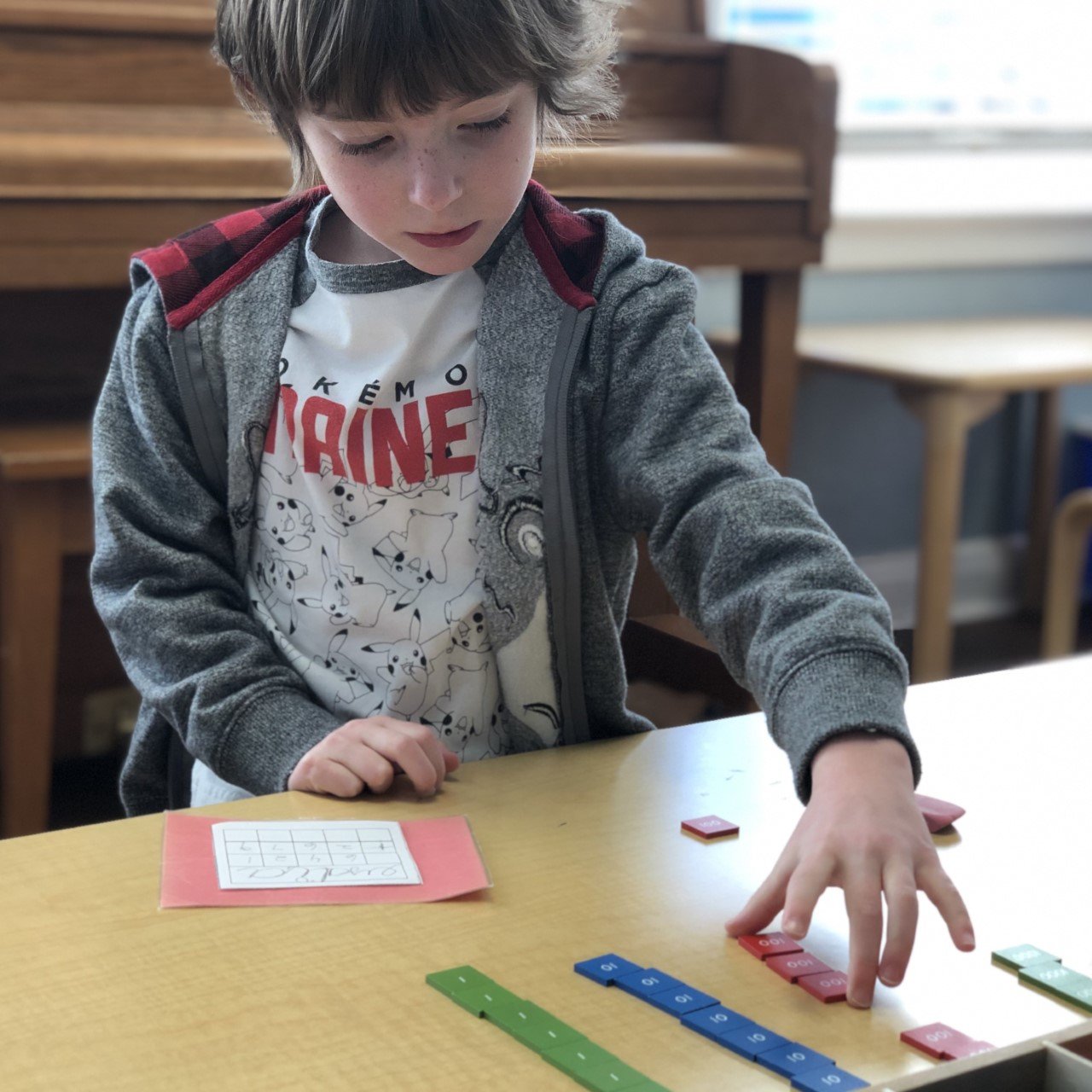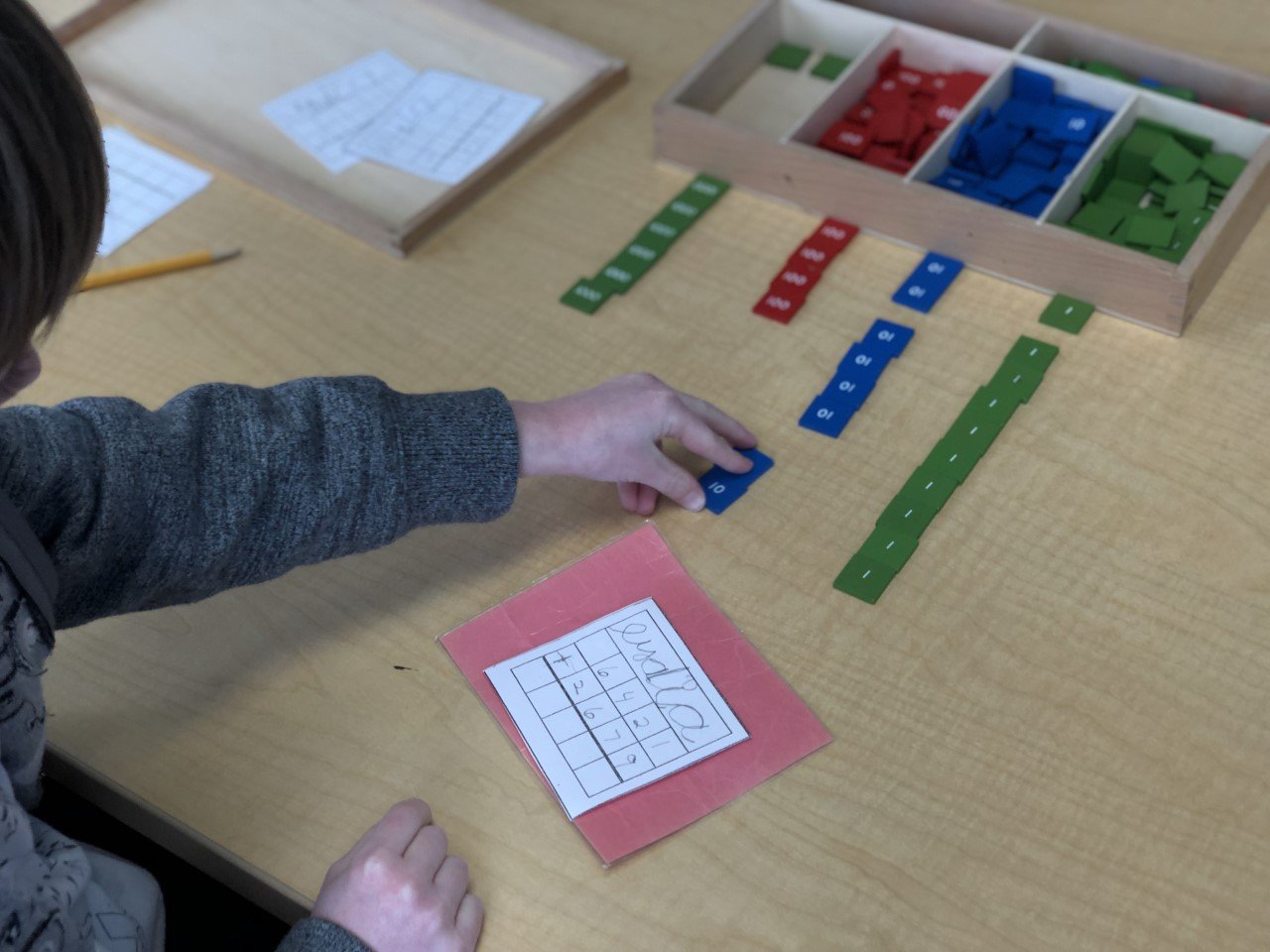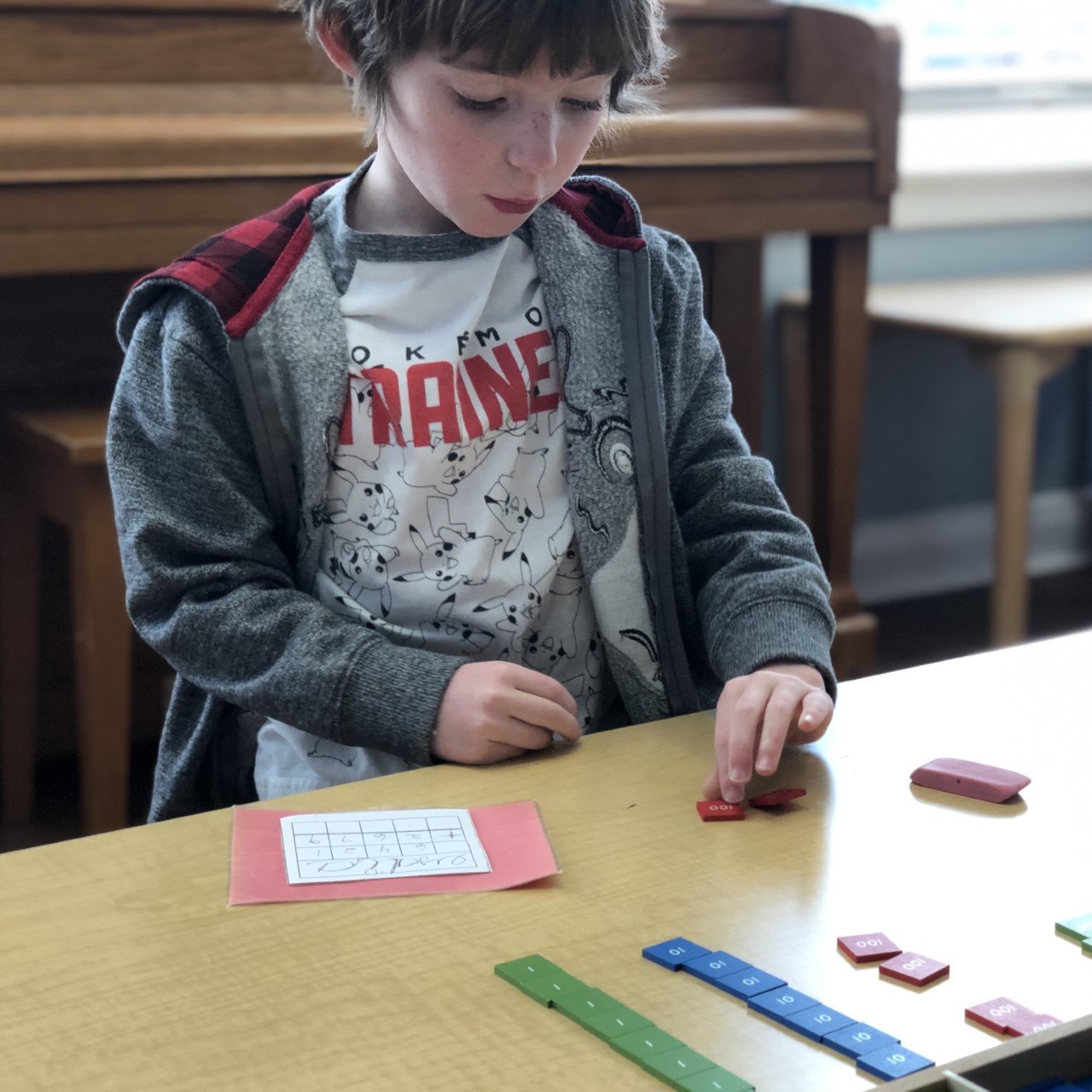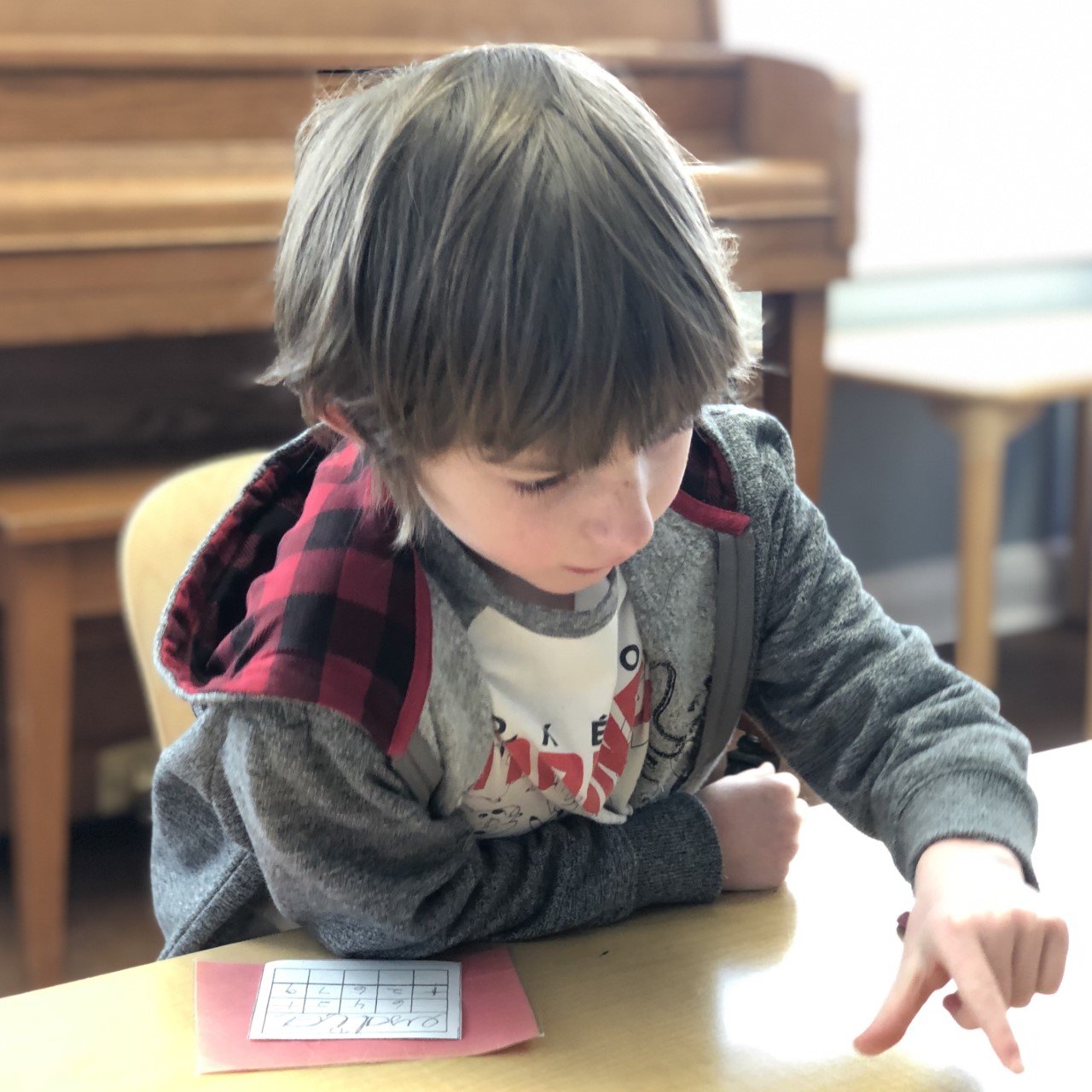Numbers on a Page - The Addition Stamp Game!
 Parents of young Montessori children don't often see a lot of "work product" from math lessons coming home with their children. There are no work sheets to complete over the weekend. No times tables to recite over dinner. This can seem foreign to those of us who learned math by rote learning—through drills, practice, memorization and workbooks to complete at home—and lead us to wonder, is math really happening in the Children's House?The answer is yes! Math is happening in the Children's House, and it is happening in a meaningful and intentional way.Like everything in the Children's House, the sequence of math lessons is designed to follow the natural development of the child. Math is introduced to the very young child in a concrete way, with sensorial materials that she can touch, feel and manipulate with her hands. With these hands-on materials, the child learns how to count, to measure, to recognize and predict patterns, to compare, and she begins to discover what happens when numbers are put together in different ways. These first materials also introduce, from the very beginning, place values—ones, tens, teens, hundreds and thousands—giving the child a solid, foundational number sense.As the child develops the ability for abstract thought, she's introduced to materials that maintain the hands-on involvement while also offering opportunities to think abstractly. She's introduced to the four operations, one at a time, as she begins to think analytically and to solve problems. And she is introduced to the purely abstract numbers on a page.
Parents of young Montessori children don't often see a lot of "work product" from math lessons coming home with their children. There are no work sheets to complete over the weekend. No times tables to recite over dinner. This can seem foreign to those of us who learned math by rote learning—through drills, practice, memorization and workbooks to complete at home—and lead us to wonder, is math really happening in the Children's House?The answer is yes! Math is happening in the Children's House, and it is happening in a meaningful and intentional way.Like everything in the Children's House, the sequence of math lessons is designed to follow the natural development of the child. Math is introduced to the very young child in a concrete way, with sensorial materials that she can touch, feel and manipulate with her hands. With these hands-on materials, the child learns how to count, to measure, to recognize and predict patterns, to compare, and she begins to discover what happens when numbers are put together in different ways. These first materials also introduce, from the very beginning, place values—ones, tens, teens, hundreds and thousands—giving the child a solid, foundational number sense.As the child develops the ability for abstract thought, she's introduced to materials that maintain the hands-on involvement while also offering opportunities to think abstractly. She's introduced to the four operations, one at a time, as she begins to think analytically and to solve problems. And she is introduced to the purely abstract numbers on a page. The Addition Stamp Game is the child's introduction into the world of abstract calculations. By the time she's introduced to this lesson, the child has mastered the foundational math materials that gave her a number sense and she has been introduced to the first operation, addition, with the golden beads.When working with The Addition Stamp Game, the child is given an addition problem on paper and asked to calculate it using small tiles, or stamps. She is practicing an abstract calculation while using familiar, concrete methods of mathematical thinking.
The Addition Stamp Game is the child's introduction into the world of abstract calculations. By the time she's introduced to this lesson, the child has mastered the foundational math materials that gave her a number sense and she has been introduced to the first operation, addition, with the golden beads.When working with The Addition Stamp Game, the child is given an addition problem on paper and asked to calculate it using small tiles, or stamps. She is practicing an abstract calculation while using familiar, concrete methods of mathematical thinking. The problem combines two 4-digit numbers so the child will use her knowledge of place values. The tiles are color-coded and numbered to represent the groups of ten. As she works out the problem with tiles and comes to a solution, she writes her answer on the page, practicing her number writing and learning a new way to represent her work.After she has mastered the Addition Stamp Game, the child will have more opportunities to bridge her foundation in the concrete with her newly abstract mind with Stamp Games in the remaining three operations—subtraction, multiplication and division. The progress will be careful and deliberate, following the pace of the child's development.
The problem combines two 4-digit numbers so the child will use her knowledge of place values. The tiles are color-coded and numbered to represent the groups of ten. As she works out the problem with tiles and comes to a solution, she writes her answer on the page, practicing her number writing and learning a new way to represent her work.After she has mastered the Addition Stamp Game, the child will have more opportunities to bridge her foundation in the concrete with her newly abstract mind with Stamp Games in the remaining three operations—subtraction, multiplication and division. The progress will be careful and deliberate, following the pace of the child's development. As she moves toward and through elementary, her work with math will become progressively less concrete until, ultimately, she will develop purely abstract mathematical reasoning.
As she moves toward and through elementary, her work with math will become progressively less concrete until, ultimately, she will develop purely abstract mathematical reasoning.
